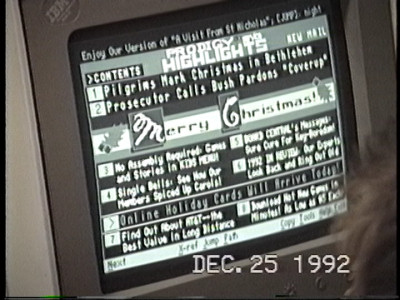Prodigy was a big early Internet service provider, and of course by the late nineties, the most popular Internet protocol was the web; most users spent most of their Internet time in a web browser.
But if you go back a few years before that, say before 1986, before the web existed, that was even the era predating MacOS 5 and Windows 3.x, when people hardly expected a graphic user interface.
How did Prodigy provide GUI for its subscribers at that time? X-protocol was bandwidth-hungry by 80's standard even via LAN or with compressing extentions, let alone through Dial-up modems under 2400bps.
